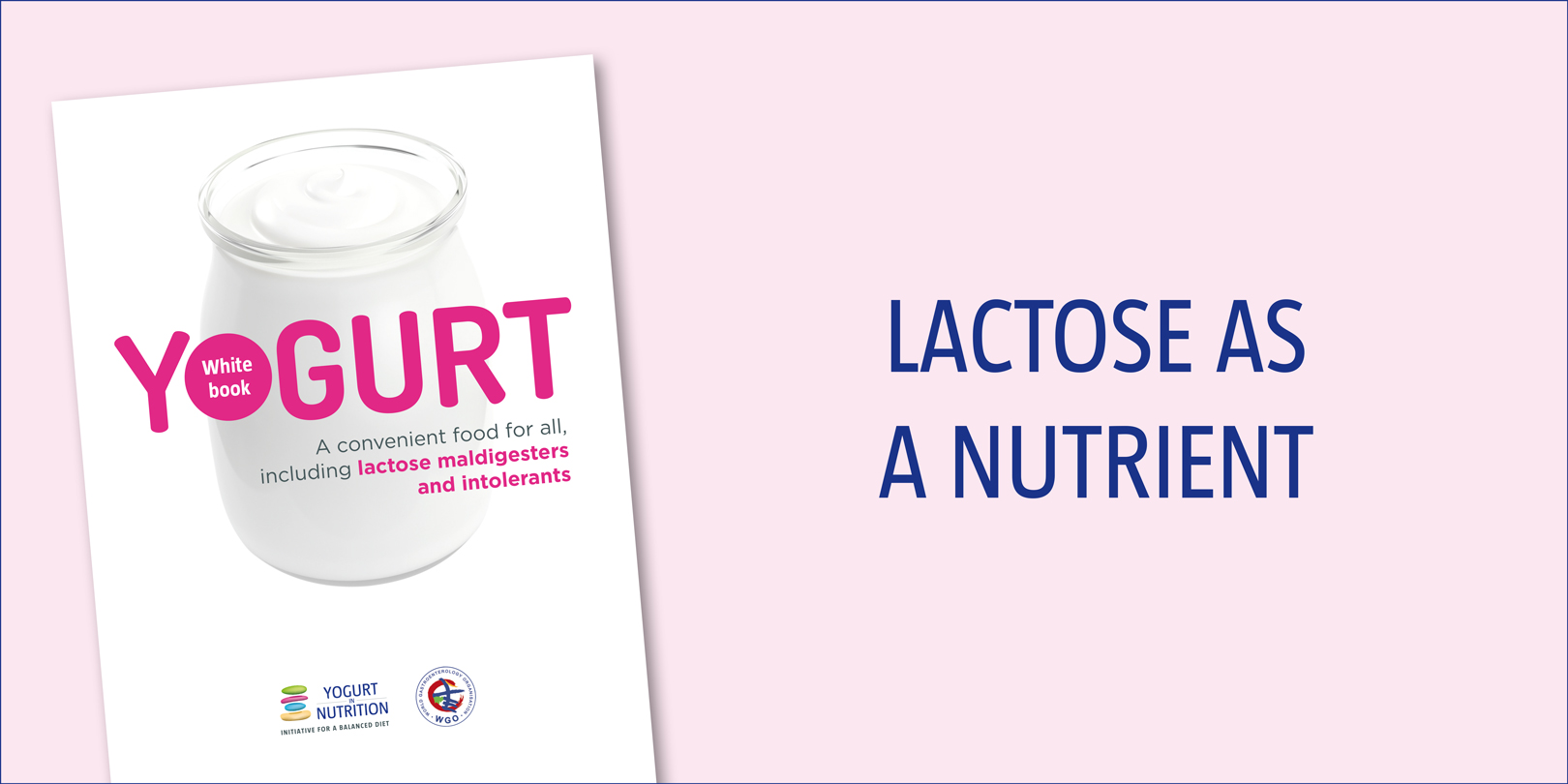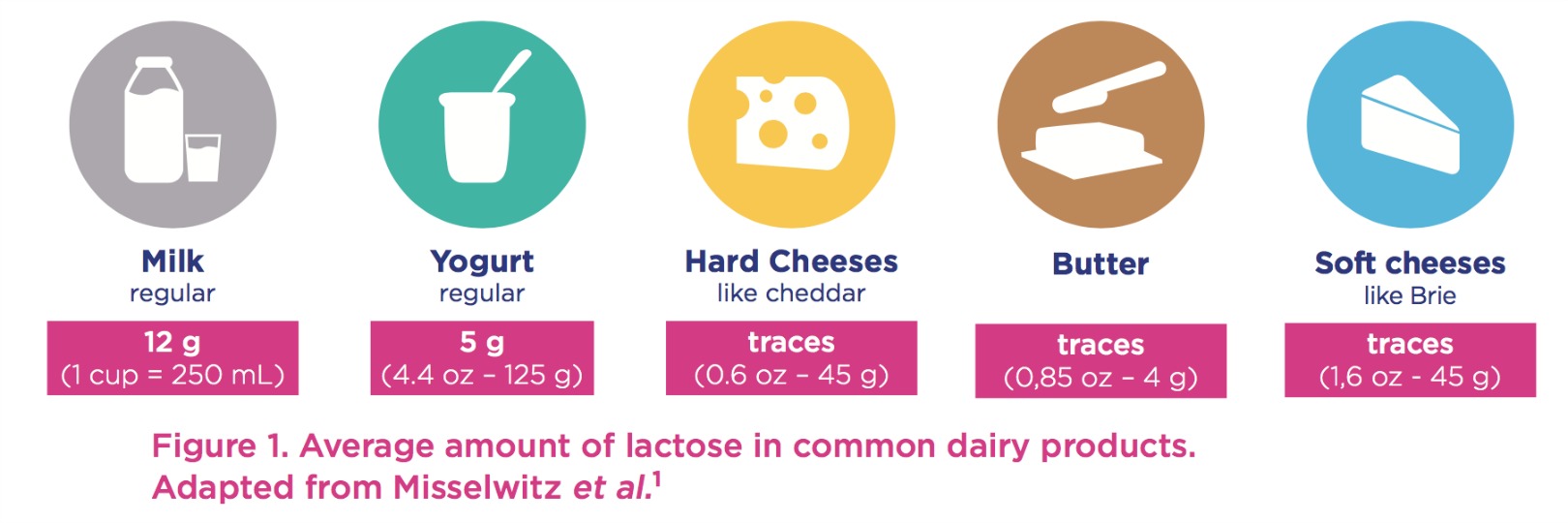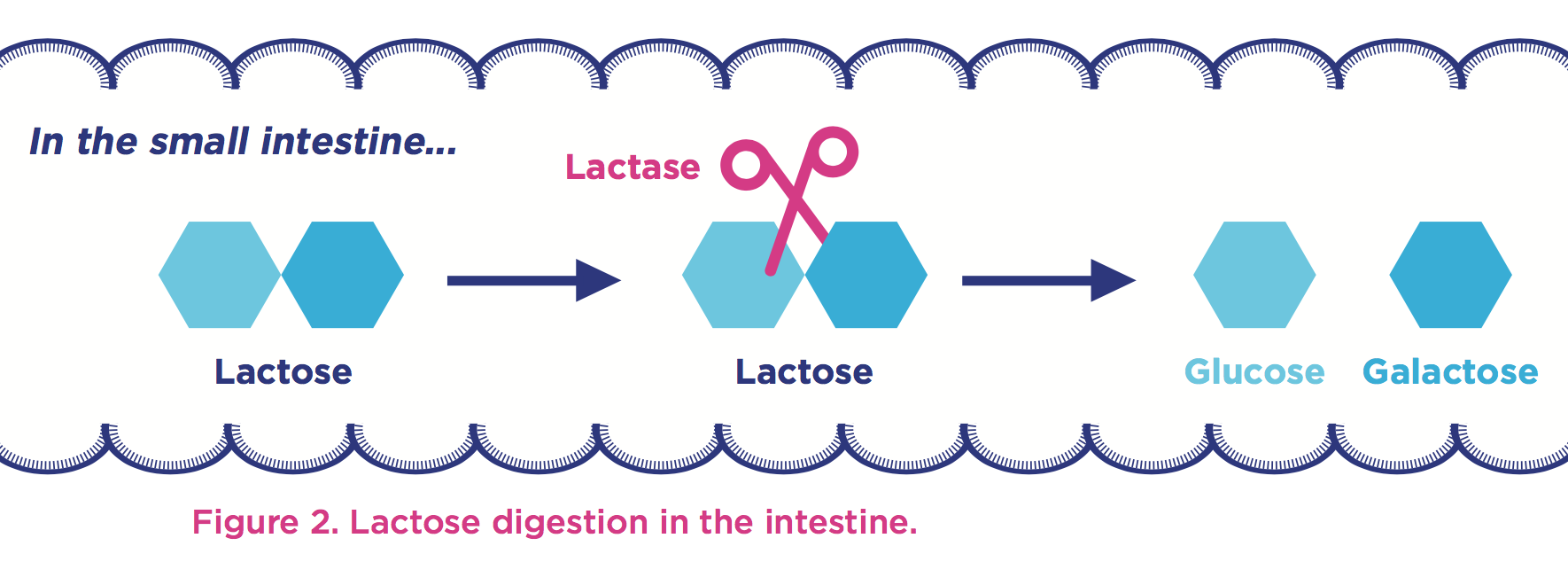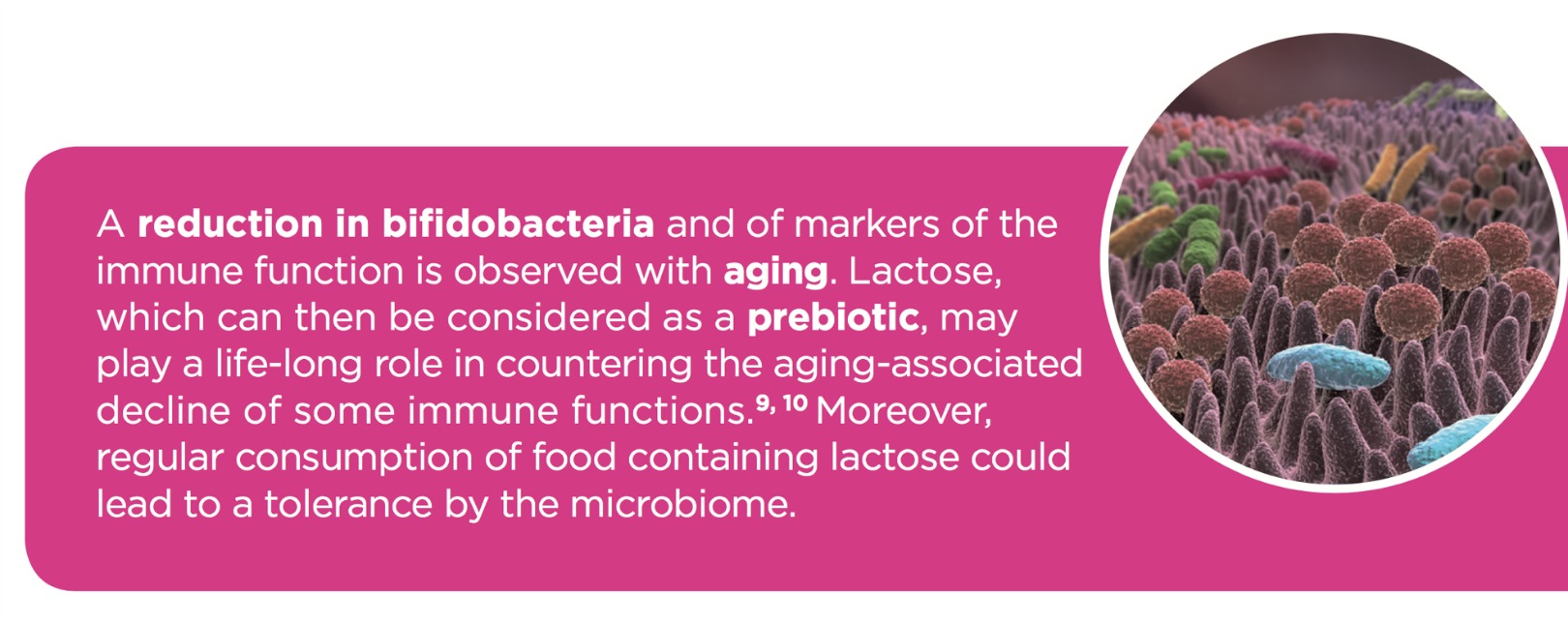Lactose is the principal sugar (or carbohydrate) naturally found, in various amount, in milk and dairy.
Lactase, an enzyme present in the small intestine, is necessary to split lactose into glucose and galactose, two simple sugars.
Glucose is the body’s main source of energy, and can be found in several types of foods.
Conversely, lactose is the only source of galactose among life. It is a component of several macromolecules (cerebrosides, gangliosides and mucoproteins). Galactose has various biological functions and serves in neural and immunological processes. It is also a component of the molecules present in blood cells that determine the ABO blood types. (2)
Lactose, an essential nutrient during childhood
Lactose is a necessary substrate, as evidenced by human milk content, which contains 7.2% of lactose and provides up to 50% of an infant’s energy needs, while cow’s milk contains only 4.7% of lactose and only provides up to 30% of an infant’s energy needs. (3) (4)
Lactose, a useful nutrient
When lactose is not digested in the small intestine, it may be used as a nutrient by the intestinal microbiota (the microorganism population that lives in the digestive tract). (5 ) Bacteria produce their own lactase, digesting lactose and resulting in the production of short chain fatty acids (acetate, propionate, butyrate) and gases (hydrogen, carbon dioxide, methane). Short chain fatty acids serve as energy locally for the gut microbiota and systemically after their absorption and their transport to the liver. Undigested lactose and other milk sugars contribute also to promote the growth of bi dobacteria, a health-positive genus of bacteria. (6)
According to more recent studies, lactose may also play a role in the absorption of calcium and other minerals such as copper and zinc, especially during infancy. (9) (10) Further studies are needed in order to confirm this hypothesis.
Sources:
1. Misselwitz, B et al. United European Gastroenterol J 2013;1:151-9.
2. Lukito, W et al. Asia Pac J Clin Nutr 2015;24 Suppl 1:S1-8.
3. Vandenplas, Y Asia Pac J Clin Nutr 2015;24 Suppl 1:S9-13. 4.
4. Venema, K et al. International Dairy Journal 2012;22:123-40. 5.
5. He, T et al. Eur J Clin Invest 2008;38:541-7
6. Vandenplas, Y et al. Asia Pac J Clin Nutr 2015;24 Suppl 1:S9-13.
9. Kobayashi, A et al. Am J Clin Nutr 1975;28:681-3.
10. Ziegler, EE et al. J Pediatr Gastroenterol Nutr 1983;2:288-94.







